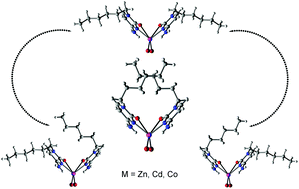Experimental and theoretical studies on the coordination chemistry of the N1-hexyl substituted pyrimidines (uracil, 5-fluorouracil and cytosine)†
Abstract
N
1-Hexyl substituted

* Corresponding authors
a
Departament de Química, Universitat de les Illes Balears, Carretera Valldemossa km 7.5, E-07122 Palma de Mallorca, Illes Balears, Spain
E-mail:
miquel.barcelo@uib.es
Fax: (+34) 971 173 426
Tel: (+34) 971 173 199
b Institut de Ciència dels Materials de Barcelona (CSIC), campus de la UAB, E-08193 Bellaterra, Barcelona, Spain
N
1-Hexyl substituted

 Please wait while we load your content...
Something went wrong. Try again?
Please wait while we load your content...
Something went wrong. Try again?
M. Barceló-Oliver, B. A. Baquero, A. Bauzá, Á. García-Raso, R. Vich, I. Mata, E. Molins, À. Terrón and A. Frontera, Dalton Trans., 2013, 42, 7631 DOI: 10.1039/C3DT32922D
To request permission to reproduce material from this article, please go to the Copyright Clearance Center request page.
If you are an author contributing to an RSC publication, you do not need to request permission provided correct acknowledgement is given.
If you are the author of this article, you do not need to request permission to reproduce figures and diagrams provided correct acknowledgement is given. If you want to reproduce the whole article in a third-party publication (excluding your thesis/dissertation for which permission is not required) please go to the Copyright Clearance Center request page.
Read more about how to correctly acknowledge RSC content.
 Fetching data from CrossRef.
Fetching data from CrossRef.
This may take some time to load.
Loading related content
